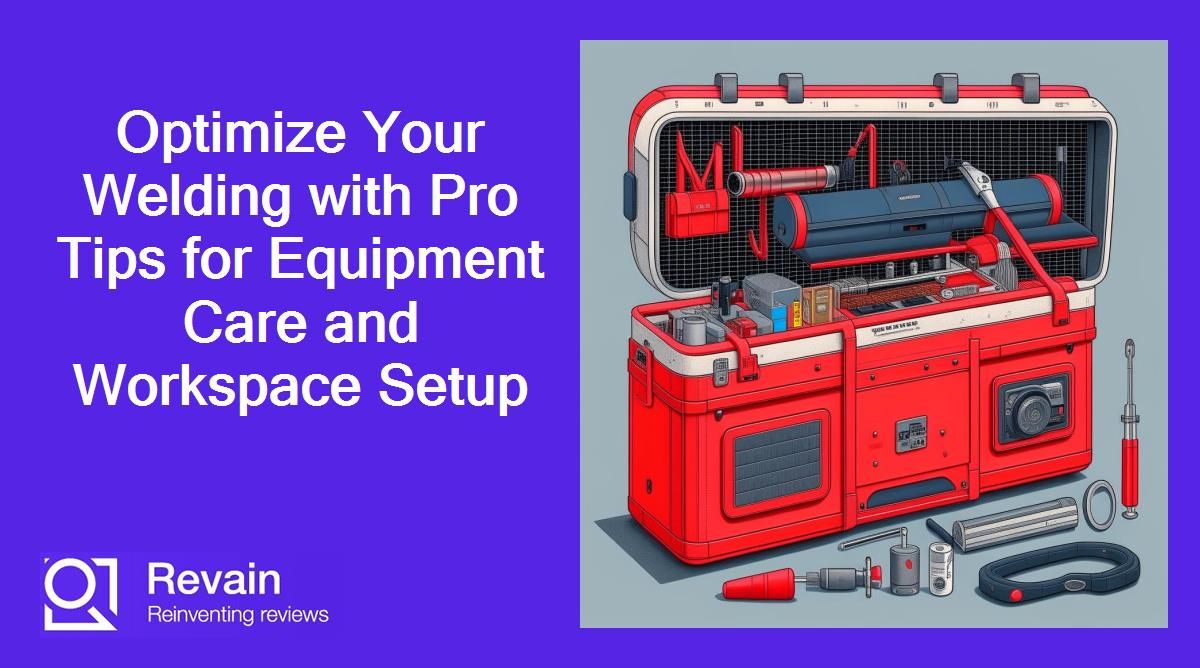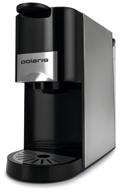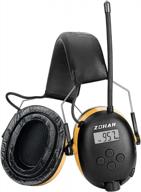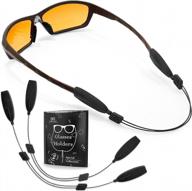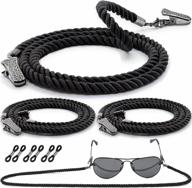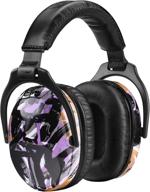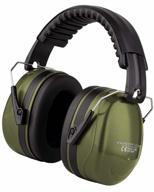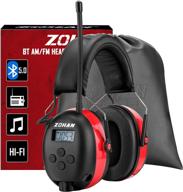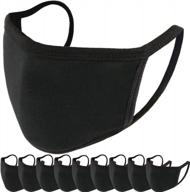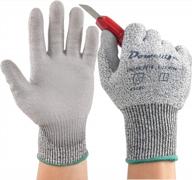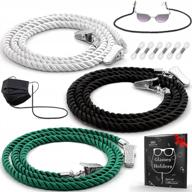Why Welding Equipment is Essential for Metal Fabrication
Welding is a fundamental part of nearly every metal fabrication project. From automotive manufacturing to sculpture art, having the right welding equipment enables joining metal components securely and efficiently. Investing in a quality welder and accessories tailored to your needs can significantly improve productivity and finish quality. This guide covers why welding equipment is essential for working with metal.
Similar products
Achieving Strong Welds
The primary goal of any welding application is creating strong, lasting joints between metal pieces. The right equipment allows concentrating enough heat exactly where it's needed to melt base materials and filler metal together into a unified whole. For example, MIG welders use an electrode wire and shielding gas to produce a stable arc for fusing metals. TIG welders use a non-consumable tungsten electrode and inert gas to make precision welds on thinner metals. Having equipment that provides adjustable, consistent heat input gives control over weld penetration and quality.
Working with Different Metals and Thicknesses
Welding equipment comes in configurations suitable for various metal types and thicknesses. MIG welders with higher amperage capacities are needed for welding thicker steel. TIG welders with advanced AC output capabilities can weld aluminum more effectively. Here are some examples:
- MIG welder - for mild steel 0.25 inches or less
- High amperage MIG - for mild steel over 0.25 inches thick
- TIG welder - for stainless steel, aluminum, thinner sections
- Plasma cutter - for cutting metal prior to welding
Having the right equipment for the metal at hand ensures you can create high-quality welds efficiently across different materials and thicknesses.
Portability Options
Some welding projects require mobility to weld on-site or at different locations. Portable welders run off engine driven generators or separate power sources. Options like suitcase MIGs allow easy transport to remote work areas:
- Engine driven welders - for field work needing up to 20,000 watts of power
- Small suitcase MIGs - for basic fabrication needs under 200 amps
- Spool guns - for portably welding aluminum with a MIG welder
Having portable equipment expands the range of fabrication projects you can tackle.
Specialized Capabilities
Certain applications call for specialized welding equipment to create unique effects. For example, spot welders join overlapping metal through pinpointed heat application. Seamers create leakproof welds on tanks. Expanded capabilities through specialty equipment increase the range of projects you can complete.
Safety and Productivity
Quality welding equipment incorporates features that allow working safely and efficiently. Auto-darkening helmets protect eyes while allowing seeing the weld puddle. Extraction systems remove welding fumes from the workspace. Handheld plasma cutters make quick work of cutting metal prior to welding. Investing in equipment with these productivity enhancing and safety-focused features will pay dividends over time.
Top products in 🔨 Welding Equipment
Conclusion
From thin sheet metal to thick steel plate, welding forms the backbone of nearly all metal fabrication work. Purchasing equipment matched to your specific needs in terms of amperage, metal types, portability, and capabilities will enable efficient, high-quality results. Prioritizing safety and productivity features also ensures you can weld comfortably and effectively. There's a range of excellent equipment options on the market that will provide many years of reliable service with proper care and maintenance.
Key Types of Welding Equipment
Choosing the right type of welding equipment for your project allows creating strong, quality welds efficiently. Here are some of the most common equipment options used in metal fabrication.
Another interesting products
MIG Welders
MIG (metal inert gas) uses a continuously fed electrode wire along with shielding gas to sustain a stable arc for welding. MIG is versatile, allowing welding of mild steel, stainless steel, aluminum and other metals. It’s one of the most popular processes for hobbyists and professionals. Key benefits include:
- All position welding
- Good for thin to medium thickness materials
- Relatively easy to learn
MIG welders are available with a range of amperages and duty cycles to suit different fabrication needs.
TIG Welders
TIG (tungsten inert gas) uses a non-consumable tungsten electrode with shielding gas to produce precise, controlled welds ideal for thinner metals. TIG can weld stainless steel, aluminum, magnesium and copper. Benefits include:
- High quality welds, especially on thinner metals
- Welds a wide range of materials
- No splatter and easy to learn
TIG welders allow adjustable heat input for dialing in optimal settings.
Stick Welders
Stick welding uses an electrode rod with flux coating that provides shielding when it burns off. Stick welding is versatile and economical. It’s often used for:
- Field work where portability is needed
- Outdoor applications such as construction
- Rougher welds that don’t require aesthetic finish
Stick welders are simple, durable and can connect to generator power.
Oxy-Fuel Equipment
Oxy-fuel cutters use pressurized oxygen and fuel gas to preheat then cut metal. Welders add filler rod to fuse metals together. Benefits include:
- Ability to cut and weld metals
- Portability
- Low equipment costs
Oxy-fuel offers a basic, economical solution for cutting and welding.
Plasma Cutters
Plasma cutters use a constricted arc and pressurized gas to cut electrically conductive metals cleanly and precisely. Plasma cutting is faster than oxy-fuel cutting. Plasma cutters are often used to:
- Cut metal prior to welding
- Make holes, custom shapes and edge bevels
- Cut metal neatly and quickly
Plasma cutters deliver fast, precise cuts in metal with automated and handheld options.
Spot Welders
Spot welders use two copper alloy electrodes to clamp materials and apply brief, concentrated current. This melts a small spot that joins the metals. Spot welding is ideal for:
- High production automation
- Joining overlapping sheets
- Making leak-proof seals on containers
Spot welders create quick welds for high volume production and specialty applications.
Conclusion
Understanding the capabilities of different welding equipment allows selecting the right process for your project needs in terms of metal types, precision, duty cycle, portability and more. Consulting experienced welding professionals can help determine optimal equipment choices.
Choosing the Right Welding Equipment
Selecting the best welding equipment for your needs ensures you can create high-quality welds efficiently. Key factors to consider include:
Types of Metals
The types of metals you need to weld determines compatible equipment options. For example:
- MIG welders - for mild steel, stainless steel, aluminum
- TIG welders - for stainless steel, aluminum, thinner sections
- Stick welders - for structural steel, pipe, cast iron
Match your equipment to the recommended process for welding your specific metals.
Material Thickness
The thickness of the metal impacts the amount of power needed from the welder. For example:
- Lower amp MIG welders - for 24 gauge up to 1/4 inch metals
- High amp MIG welders - for 1/2 inch and thicker sections
- TIG welders - for thinner gauges from 18 gauge to 1/4 inch
Select equipment that can penetrate and weld the thickness you need.
Welding Positions
Consider what welding positions you need to work in. Certain processes are better for specific positions:
- MIG welders - good for all positions including overhead
- TIG welders - suited for intricate flat and horizontal welds
- Stick welding - ideal for vertical and overhead welds
Choose equipment aligned with your required welding positions.
Portability Needs
If you need portable welding capabilities, look for equipment with options like:
- Engine driven welders - for field work
- Inverter based MIGs - for lighter weight and transport
- All-in-one suitcase welders - for maximum portability
Consider how much mobility you require.
Input Power Available
Equipment power input options include:
- 120V vs 240V input welders
- Generator compatible welders
- Engine drive welders
Match your welder to your available power sources.
Special Features
Added features to consider for increased functionality include:
- AC/DC output - for aluminum and steel welding
- Pulsed MIG - for fine-tuning heat input
- Spool gun - for easier aluminum MIG welding
Determine if added capabilities could benefit your work.
Budget
Welding equipment spans a range of investment levels. Define your budget and identify options offering the best value in your price range.
Conclusion
Choosing welding equipment tailored to your specific metal types, thicknesses, welding positions, portability needs and available power enables you to achieve the highest quality, most efficient results. Prioritize quality, value and capabilities that make sense for your projects.
Essential Safety Equipment for Welding
Welding and metal fabrication involve serious hazards from heat, sparks, fumes and ultraviolet and infrared radiation. Using proper protective safety gear is crucial for reducing risks and preventing injuries. Key welding safety equipment includes:
Welding Helmet
A welding helmet provides face and eye protection from sparks while allowing viewing the weld puddle. Key features include:
- Adjustable dark shade filter for blocking welding arc glare
- Clear lenses for grinding and inspection
- Auto-darkening lens that transitions from light to dark
- Wide viewing area for optimal visibility
Auto-darkening helmets improve productivity and safety.
Welding Gloves
Heat-resistant gloves protect hands from welding spatter, sparks, hot metal and accidental contact with the welding torch. Leather, synthetic leather or welder’s gloves manufactured from fire-resistant materials should be worn.
Welding Jacket and Pants
A cotton or leather welding jacket provides protection for arms and torso. Fire resistant pants guard legs from sparks and spatter. Leather jackets and pants offer the highest level of protection.
Work Boots
Sturdy steel-toe work boots safeguard feet from falling metal and prevent accidental burns. The boots should cover and protect ankles as well.
Hearing Protection
Ear plugs or other hearing protection dampens high decibel noise levels produced by some welding equipment. This prevents gradual hearing damage over time.
Welding Respirator
A respirator with filter cartridges is necessary for protecting lungs from welding fumes containing manganese, chromium, nickel, and other hazardous substances. An air supplied respirator is optimal.
Safety Glasses or Goggles
Impact resistant safety glasses worn under the helmet provide protection when chipping slag or grinding welds. Dark shaded glasses protect eyes from intense ultraviolet and infrared light.
Conclusion
Using a full range of proper protective welding safety gear greatly reduces injury risks inherent in welding such as eye damage, burns, metal shard injuries and long term health effects from fume inhalation. Investing in high quality safety equipment improves comfort and allows focusing fully on the welding task at hand.
Creating an Effective Welding Workspace
A well planned, organized welding workspace improves efficiency, safety and quality results. Key factors in setting up a productive welding area include:
Location
The ideal welding area is:
- A dedicated, enclosed space separate from other operations
- Away from flammable materials and high traffic areas
- Covered with fire resistant walls, floor and ceiling
Having a permanent welding zone prevents distractions and accidents.
Ventilation
Adequate ventilation removes welding fumes to prevent exposure. Options include:
- Welding tables with built-in fume extractors
- Flexible fume extraction arms
- Roof exhaust fans and blowers
- Portable fume extractors with HEPA filters
Local exhaust ventilation at the weld point is most effective. Outdoor welding is an option if permitted.
Fire Prevention
Steps for reducing fire hazards include:
- A fire extinguisher and fire blanket nearby
- Flame-retardant curtains around the welding area
- No flammables within 35 feet of the arc
- A fire watch when welding around combustibles
Good housekeeping and monitoring for fires prevents accidents.
Work Surfaces
Suitable work surfaces include:
- Steel welding tables and benches
- Non-combustible surfaces for workpieces
- Heat-resistant flooring such as concrete
Durable, fireproof surfaces protect the work area.
Electrical Needs
Adequate power supply requires:
- 220-240V circuit with proper amperage rating
- Dedicated circuit for each welder
- Properly grounded and polarized outlets
- Covered cables in good condition
Sufficient electrical service prevents overloading and reduces fire risks.
Compressed Gas Storage
Compressed gas cylinders must be:
- Chained upright to a wall or cart
- Capped when not in use
- Stored away from heat sources
- Labeled properly
Safe compressed gas storage avoids accidents.
Conclusion
Creating an efficient, safe welding workspace allows for quality, productive fabrication work free from injuries and distractions. Considering ventilation, fire hazards, adequate work areas, electrical needs and compressed gas storage makes welding projects more successful.
Proper Maintenance and Care of Welding Equipment
Taking good care of your welding equipment means it will have a long, productive service life. Regular maintenance and proper storage also helps prevent costly repairs down the road. Here are some tips for maintaining welding gear:
Daily Cleaning
Remove spatter and dirt buildup daily from the welding nozzle, drive rolls, and wire feed path using:
- A brass or nylon brush to clean the nozzle and tip
- Compressed air to blow out the drive rolls
- Wire cleaning tools to clear the feed path
Clean splatter makes wire feeding problems less likely.
Routine Maintenance
Check and replace worn parts periodically, including:
- Contact tips - replace when erroded
- Drive rollers - replace if worn or grooved
- Diffuser - replace if damaged
- Hoses - inspect for cracks or leaks
Routine maintenance reduces operating issues and downtime.
Proper Storage
For storage:
- Fully unwind MIG gun and electrode cables
- Store equipment in a clean, dry location
- Keep covered with a welding blanket or tarp
- Place on a sturdy shelf or table
Proper storage increases longevity.
Manufacturer Recommendations
Consult the manufacturer's guidelines for:
- Recommended replacement consumables and intervals
- Maintenance procedures and schedules
- Calibration requirements
- Yearly service recommendations
Following factory recommendations prevents premature failures.
Visual Inspections
Routinely inspect equipment for:
- Damaged power cords and plugs
- Cracks in casings
- Loose connections
- Error codes
Visual inspections can catch problems early.
Recordkeeping
Document all maintenance activities including:
- Date performed
- Parts replaced
- Any error codes
- Service performed
Records help spot patterns and plan future maintenance.
Conclusion
Regular cleaning, maintenance, inspection and care makes welding equipment last longer, malfunction less and provides better performance. Protect your investment with good equipment care habits.
Using Amazon Prime to Buy Welding Equipment
Amazon Prime provides an easy, convenient way to purchase quality welding equipment and supplies. Here are some tips for leveraging Prime benefits when buying welding gear:
Compare Welders
Amazon stocks welding machines from top brands like Lincoln Electric, Miller, Forney, AHP, and YESWELDER. Browse MIG, TIG, Stick, Multi-Process, and Plasma Cutters. Use Prime customer reviews and ratings to compare durability, duty cycle, amperage range, ease of use, and other specs to choose the right welder for your needs.
Search Within Prime
Narrow your search to items eligible for Prime shipping benefits using the “Deliver to” filter. This ensures you only see welders and accessories available for fast shipping.
Check for Prime Logo
Look for the Prime logo when browsing items. It indicates the product is eligible for unlimited fast, free shipping and returns. Non-Prime items will indicate an estimated delivery timeframe.
Enable One-Click Ordering
One-Click ordering makes Prime purchases fast and seamless. Enable it in Your Account settings for convenience.
Use Prime Try Before You Buy
Select Prime-eligible welders qualify for Prime Try Before You Buy. Test the welder at home for 7 days before purchasing to ensure it meets your needs.
Monitor Prime Day Deals
Prime Day often features major discounts on welders, welding accessories, safety gear, clamps, magnets, auto darkening helmets, and more. Add items to your Watch List to monitor deals.
Join Prime Student
College students can join Prime Student to access the same Prime benefits at half the regular price for an extended trial period.
Use Prime Photos for Project Ideas
Browse the Prime Photos library for inspiring welding project ideas. Search keywords like “welded metal art”, “welding sculptures” or “creative MIG welds”.
Conclusion
Amazon Prime’s selection, fast shipping, reviews, and other perks help you conveniently purchase quality welding equipment and accessories. Compare top brands, focus your search, monitor deals, and leverage other Prime benefits to get the gear you need.
Welding Equipment Solutions For Heavy Fabrication
Welding equipment solutions for heavy fabrication can be found through various types of welding and fabrication techniques. Here are some of the most popular solutions:
- Industrial welding solutions for heavy equipment manufacturing, including agricultural, construction, mining, and lifting equipment.
- Four common types of welding and fabrication for heavy equipment: shielded metal arc welding, gas metal arc welding, flux-cored arc welding, and Tig.
- Cutting and welding solutions for heavy steel fabrication applications such as mining, agriculture equipment, and construction.
- Essential welding equipment for fabrication work, including welding machines, welding electrodes, and welding tables.
- Best welding machines for fabrication, such as the Millermatic, Miller Multimatic, and Hobart IronMan, along with relevant accessories and consumables.
- Custom welding solutions for construction and fabrication projects to increase workforce productivity while decreasing outsourcing, training time, and rework.
What Are The Most Popular Welding Machines For Heavy Fabrication?
According to the search results, here are the most popular welding machines for heavy fabrication:
- Millermatic
- Miller Multimatic
- Hobart IronMan
- Esab warrior 500i Multipurpose Inverter arc welding machine
- MIG welding machines
- TIG welding machines
It is important to note that the choice of welding machine depends on the specific needs of the project. Therefore, it is recommended to do thorough research and consult with experts before making a purchase.
What Are The Differences Between Tig, Mig, And Arc Welding Machines?
MIG, TIG, and arc welding machines are all used for welding metals, but they differ in their processes and applications. Here are the main differences between these welding machines:
MIG Welding:
TIG Welding:






